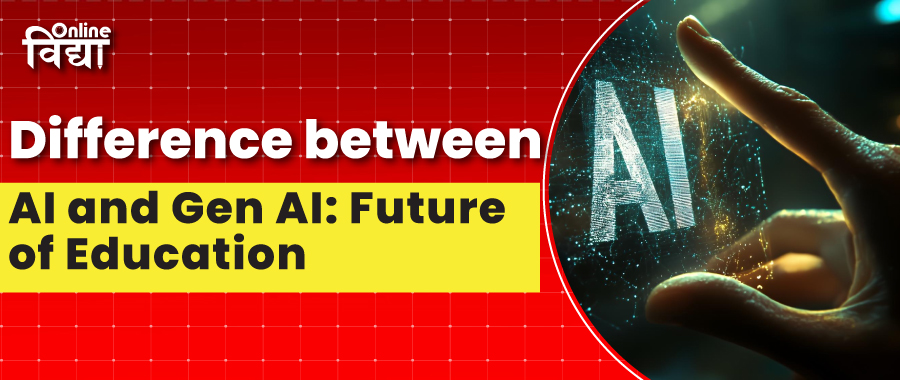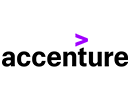Specializations
Courses Available
Courses

Difference between AI and Gen AI: Future of Education
Difference between AI and Gen AI: Future of Education,May 23, 2025
Information
May 23, 2025
986 Views
- Share:
In all sectors, including education, artificial intelligence (AI) and its subcategory, generative AI, are not only here to stay but are becoming increasingly common. The debate between generative and traditional AI is not which one is better, but the roles and functions that each performs in the educational sector.
AI has several uses in education, including:
- Adjusting educational materials to a student's learning mode of choice;
- Streamlining administrative tasks such as scheduling and grading so that teachers can focus more on teaching.
- Educate students in style and grammar so that they can write more effectively.
- Examine enormous amounts of student data to inform policymakers with well-educated decisions.
- Furthermore, legacy AI can also be utilized for gamification and virtual reality to engage students on a more individualized level, giving on-demand, customized education for people at any stage of their career, and broadening accessibility to students who are sick and cannot go to school.
The following are a few examples of how generative AI could benefit educators and learners:
- Designing Interactive Scenarios To Enable Students To Practice Language Skills;
- Converting Learning Materials Into More Accessible Forms, Including Audiobooks, Simplified Text, And Interactive Tools;
- Assessing Existing Curricula And Suggesting Revisions, New Subjects, And Interdisciplinary Learning Opportunities;
- Generating Synthetic data sets to maintain student privacy.
In addition, legacy AI can be utilized in virtual reality and gamification to better individually engage learners, offer on-demand, individualized learning to learners at all stages of their careers, and create opportunities for access for students with illnesses and not attending school.
The following are a few ways in which generative AI could benefit educators and students:
- Developing Interactive Scenarios For Students To Practice Language Skills;
- Converting Learning Materials Into More Accessible Forms, Like Audiobooks, Simplified Text, And Interactive Tools;
- Assessing Existing Curricula And Suggesting Updates, New Subjects, And Interdisciplinary Learning Opportunities;
- Generating Synthetic Data Sets To Maintain Student Privacy.
Below are some important key points that will underline all the differences between AI and Gen AI:
- Within defined boundaries, AI analyzes and understands existing data to increase productivity, accuracy, and decision-making. Generative AI employs existing data to create models, text, graphics, and music.
- Applications of AI include autonomous systems, natural language processing, and predictive analytics. Since generative AI produces information, it is used in scientific research where scientists are establishing new models and hypotheses, as well as for the creation and design of content.
- Generative AI models often act as "black boxes," compared to conventional AI models that are typically more transparent and understandable, since their decision-making process is less accessible.
- As compared to traditional AI, which is generally more efficient, particularly in the case of well-defined activities that involve less intensive training of the model, generative AI models often require substantial computational power and training time and hence are less scalable.
- Based on the complexity of the task and the model used, generative AI needs more data compared to non-generative AI systems, but traditional AI can easily work with fewer datasets.
- While conventional AI can adjust to a certain degree, it often needs specific training for each task or use. Generative AI can generate content in multiple subjects and adjust to different domains.
The Future of Education
There is a direct connection between the future of AI and learning. Through its tools for teachers, administrators, and learners, artificial intelligence is truly transforming education. Rather than being one-size-fits-all, learning will be more and more based on AI-powered experiences that are hyper-personalized to address the unique needs of each learner, self-paced, self-directed, and highly responsive.
The adoption of AI systems will compel educators across the board—from elementary school through graduate school—to rethink how to ensure that students are memorizing the material, learning valuable life skills, and understanding how to apply those skills to careers that will certainly be dramatically changed by AI.
To make certain that the students are well immersed in the content and can utilize what they have gained, teachers will be required to create new forms of personalized learning content and provide AI-augmented capabilities. They will also be required to ensure that the students are learning valuable AI capabilities that they can use in the future.
AI has presented educators across the globe with the hard and important challenge of determining how to maximize AI's benefits while reducing its risks and detriments. One of the greatest potential challenges for education today is determining how to best utilize and deal with AI in the classroom. How the industry responds will dictate the future of education, students, and ultimately life as we know it.
FAQs
What makes artificial intelligence different from Gen AI?
AI is applied in autonomous systems, natural language processing, and predictive analytics. Due to the fact that generative AI creates information, it is applied in scientific research, where scientists are formulating new models and hypotheses, and in developing and designing content.
Does ChatGPT leverage GenAI or AI?
Generative AI is what ChatGPT is. This specific form of AI technology produces text responses that are similar to a human.
Is Grammarly a Generative AI?
Generative AI is an important aspect of Grammarly's platform. While its editing and grammar-checking features are its most publicized ones, it also employs generative AI for tasks such as content generation, brainstorming, and tone adjustment.

Meet Our Counselling Experts
Get 100% Free Career Counseling




PlacementPartners










Schedule Your 30 min Couselling Session With Today!!
Select a Date of your choice :
You Have Selected Slot on .

